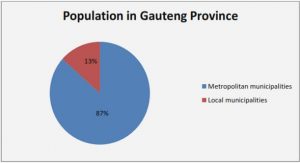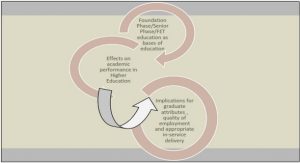Get Complete Project Material File(s) Now! »
Church History from a Theologico-Historical Perspective
Church historians, like secular historians, organize and interpret the data collected to reconstruct the past according to a chronologically reasoned order. In this intellectual process, they can get away from neither subjectivity nor certain supposition. Therefore, church historians must free themselves from an uncritical position and avoidable prejudices. In order to do so, historiography must basically adopt a theological and critical method with the Church as norm (Brown 1985:1-18). This means that Church History as a chronological description or mission history is, in a broad sense, Church History from a theological point of view fundamentally because all works of church historians were influenced by their theological backgrounds, consciously or unconsciously. However, what the section mentions means Church History which has a special theological viewpoint from a starting point of research. For instance, Cullman insisted that all history is to be understood in the light of salvation history. He contended that Christian knowledge of the “not yet,” combined with the “already,” plays a decisive role in “being fellow-workers in carrying out the saving plan in history” (Cullman 1967:338).
In the early part of the 1960s, theological circles in Korea began to debate the concept of “indigenization theology.”16 Among three general approaches to history (pre-critical, critical and post-critical) as mentioned before, this belongs to the third approach to history. This viewpoint attempted to regard the Koreans not as the object of mission but as the subject of mission. Liberal theologians especially have regarded it as an important topic for the history of the church in Korea since then. To consider some literature with the theological and ethnocentric perspective (the postcritical writing), Palmer published Korean Christianity: the Problem of Identification with Tradition in 1967. Here, he dealt with the identification of conventional culture and Christianity as important keys concerning the success of the mission work in comparison with Chinese Christianity. For him, the central issue of Christian mission was to assimilate different cultures. Palmer (1967:96) said, “… in conclusion, and in view of the record of Protestantism in Korea and China, it must be said that Christian identification with Asian tradition can be a distinct advantage…”
Min Kyung-Bae’s Hankuk Gidokgyo Hyungseungsa: Hankuk Minjok Gyohoi Hyungseungsa (A History of Church in Korea: A History of the Formation Process of the Korean National Church) (1972) was written from an ethnocentric point of view. He expressed his regret at the early history of the Korean church because he regarded it as history recorded from a foreign imperialistic point of view. Furthermore, he pointed out the negative influences given by early missionaries. He emphasizes discontinuity from such a historical point of view. Furthermore, he stressed the need for a national church to establish Korean independence. For him, the decisive forces of a national church consist of Christian piety (legacies inherited from Christian tradition) and Korean nationalism (legacies inherited from the Korean tradition). Ryu Tong-Shik’s Hankuk Shinhakeui Kwangmaeck (A Vein of the Korean Theology) (1982) introduced various theological points of view and systematized them. Ryu also wrote in terms of Min’s viewpoint.
The Missionary Movement
However, in the nineteenth century, two parties: fundamentalism and liberalism pitched their strength against each other. However, the period was called ‘the greatest century’; thus, it was very important period in the history of Christianity (Latourette 1944:442). This was because ‘never before in a period of equal length had Christianity or any other religion penetrated for the first time as large an area as it had in the nineteenth century’ (Latourette 1953:469). Van Dusen (1947:35 in Kim 1992:6) also evaluated that ‘in terms of geographical extension, the Christian movement reached to the ends of the earth, penetrating every continent and touching almost all people.’ This meant that the period was the glorious epoch of mission movement. Even though the large-scale Protestant foreign missionary movement was begun by William Carey, (1761-1834)56 known as ‘the father of modern missions,’ for this study’s purpose, only the American mission movement will be considered.
The Origin of Foreign Mission in America
The London Missionary Society was founded in 1795 as the first inter-denominational foreign mission society. Fifteenth years after the American Board of Commissioners for Foreign Missions, which was the first foreign mission board in the United States, was organized by the appeal of a group of students in Andover theological Seminary in 1810. Samuel J. Mills (1783-1818), who was the leader of the group, influenced many students; ‘More than any other one man he was responsible for the beginning of the foreign mission from the United States’ (Latourette 1961:28). Their “haystack meeting”57 resulted in the formation of the society of the Brethren with some of the members entering Andover theological Seminary. By joining the Seminary, Adoniram Judson, Samuel Newell and Samuel Nott, Jr. Mills and Judson, who had spent thirtyseven years in Burma, were the leading spirits in the early development of the foreign missionary movement in the United States (Dillenberger and Welch 1954:173). After that, many missionary organizations were formed which were involved in foreign mission work: the Baptist Society for Propagation of the Gospel in India (1814); the Methodist Episcopal Church (1819); the Protestant Episcopal Church (1821); the Evangelical Church (1837); and other societies in every major denomination (Kane 1978:88-89). The picture of the missionary work of the United States in the eighteenth and early nineteenth century was devoting to but was on a small scale. The scale changed with Dwight L. Moody’s (1837-1899) evangelical revivals and the Student Volunteer Movement, which he led, came onto the stage of the foreign mission.
The Resistance of the Korean Church
Since 1937, before the resistance of the Korean Church against Japanese Shrine worship, Governor-General forced the Koreans to pray for the victory of war, which was the time when the war of China-Japan broke out. Many schools, which were against it, were closed down.99 With violent force, the Government-General made the church a victim by forcing the church to worship at the Japanese shrine. When Pyungbuk Synod, which was one of the biggest synods in numbers, was held on 19 February 1938, the Sunchun police station hatched a plan. It made Kim Il-Sun, chairman of the Synod, work as a secrect agent for Japan, and made him introduce a resolution in favour of Shrine worship. Even though only two or three members came to vote under surveillance of police officers in civilian clothes, the resolution was passed without difficulty. Japanese imperialists used coercive measures like this, forcing seventeen out of twenty-three synods over the country to submit to Shrine worship. At last, the Government-General made a resolution in favour of shrine worship to be passed at the Twenty-seventh General Assembly of Presbyterian Church. When the meeting was over, twenty-three Chongdaes (representatives of General Assembly) including vice-chairman, Rev. Kim Gil-Chang, directly went and worshipped at the shrine in Pyungyang (Kim 1997:269, 271).100 Rev.
CHAPTER 1: INTRODUCTION
1.1. Statement of the problem
1.2. Aims and objectives of the study
1.3. Methodology
1.4 Hypothesis
1.5 Periodization of the Study
1.6 Thesis Outline
1.7 Conclusion
CHAPTER 2: THE RELIGIOUS SITUATION OF AMERICA IN THE TIMES OF EARLY FOREIGN MISSIONARIES
2.1. The Westminster Standards as the Stronghold of Conservative Theology in the Nineteenth Century
2.2. Liberalism
2.3. The Missionary Movement
2.4. Conclusion
CHAPTER 3: THE EARLY FOREIGN MISSIONARIES’ WORKS AND THOUGHTS
3.1. The Frontiers of the Korean Mission
3.2. The Large-Scale Entry of Early Foreign Missionaries
3.3. The Early Foreign Missionaries’ Works
3.4. The Theological Thoughts during the period (1894-1909)
CHAPTER 4: THE KOREAN PRESBYTERIAN CHURCH UNDER THE RULE OF JAPANESE IMPERIALISM
4.1. The General Delineation of the Korean Society and Church under Japanese
Imperialism (1910-1945)
4.2. The March First Movement and the Korean Church1
4.3. Shintoism and the Korean Church
4.4. The Rise of Liberalism
4.5. Conclusion
CHAPTER 5: THE KOREAN PRESBYTERIAN CHURCH AFTER LIBERATION
5.1. General Sketch of the Period
5.2. Reconstructions and Schisms of Church
5.3. The Schism within the Presbyterian Church
5.4. Evaluation
5.5. The Influence of the Pentecostal Church
CHAPTER SIX: CONCLUSION
6.1. The Summary
6.2. The Restoration of Puritan Ideas to the Korean Presbyterian Church






